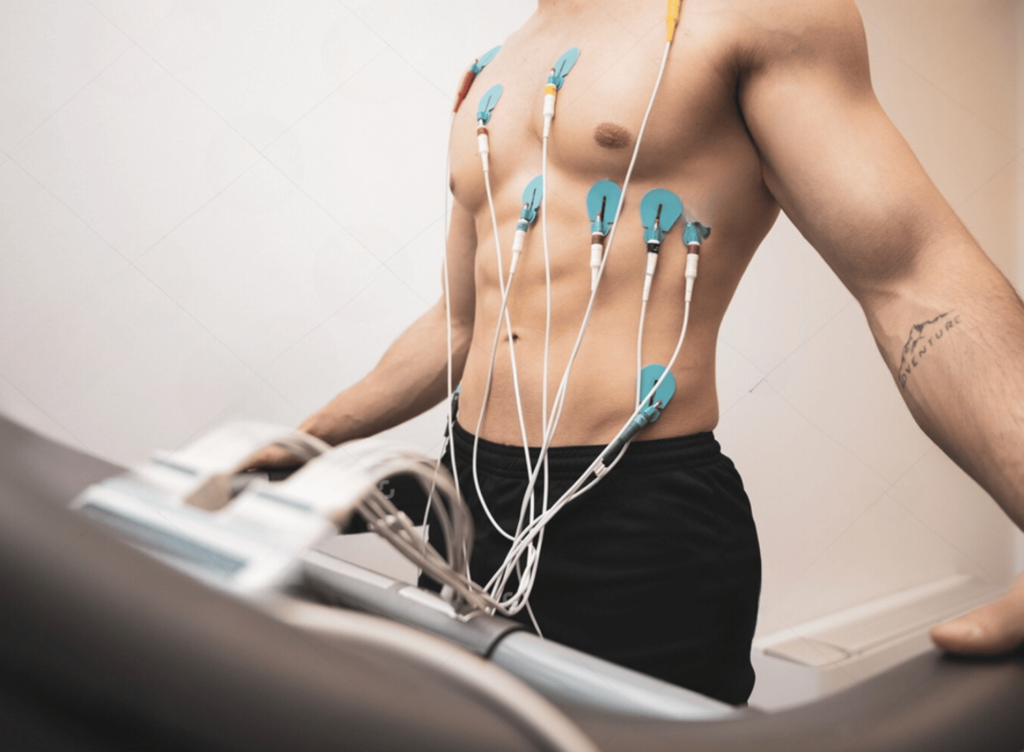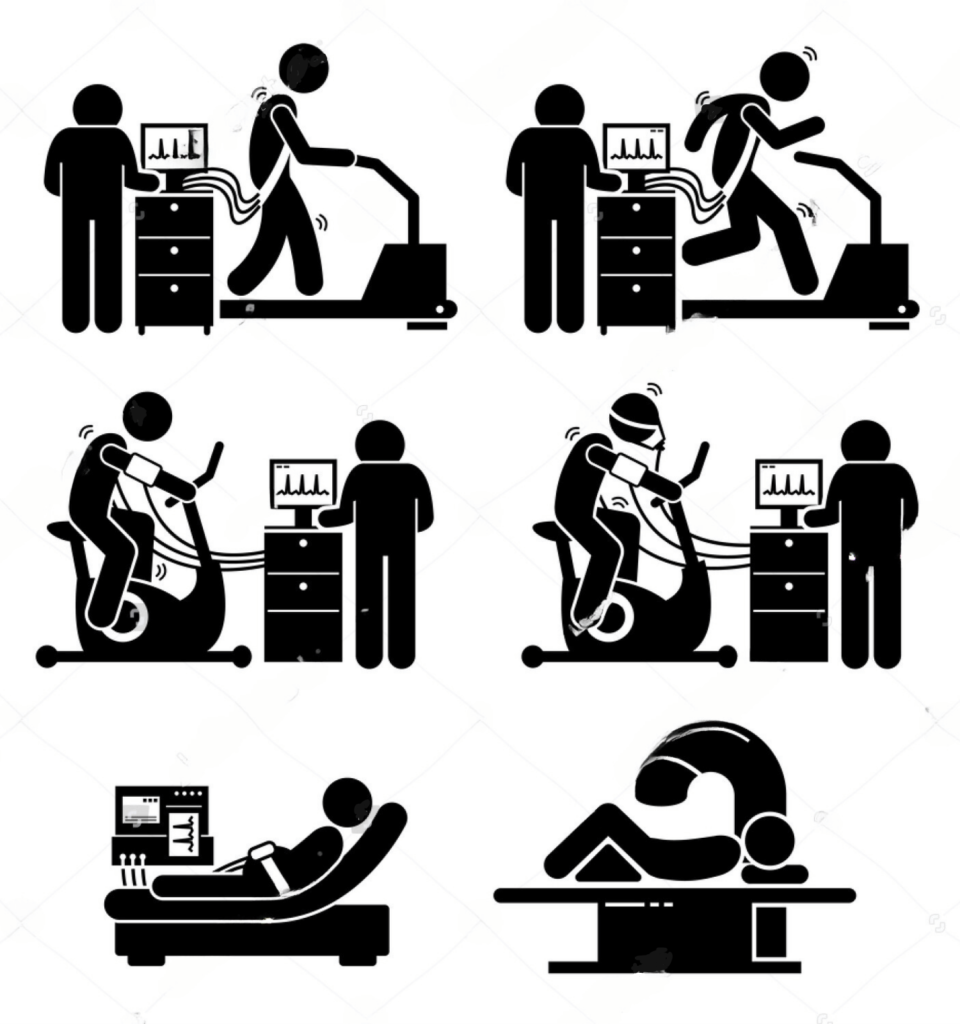Discover natural and effective ways on how to detox after nuclear stress test. Follow expert advice for safe, beneficial post-test recovery.
If you’ve recently undergone a nuclear stress test, it’s important to know how to properly detox your body afterwards. This medical procedure involves injecting a small amount of radioactive dye into your bloodstream to measure blood flow to your heart.
While it’s a low-risk procedure, the body may still retain some traces of the radioactive material afterward. In this article, we will know about effective strategies to detoxify your body and eliminate any lingering radiation.
From natural remedies to dietary changes, we will provide you with actionable tips to help you cleanse your system and promote overall health. Don’t let the stress test linger in your body – learn how to detox effectively today.
What is a nuclear stress test?

A nuclear stress test is a medical technique that employs a small amount of radioactive dye and a detector to capture images of your heart.
It enables doctors to monitor the flow of blood to the heart and detect any potential problems, such as artery blockages.
During the test, you’ll be asked to workout on a treadmill or a stationary bike while the radioactive dye is injected into your bloodstream.
The dye then travels to your heart, and the imaging machine takes pictures, allowing your doctor to see how well the blood is flowing.
Understanding Radioactive Tracers
Throughout the stress test, you get an injection of a radioactive substance, known as tracer, which allows doctors to take reliable photos of your heart’s blood flow and function.
The two most commonly used tracers are thallium-201 (Tl-201) and technetium-99m (Tc-99m), each with its unique properties and elimination timeline.
Thallium-201 (Tl-201)
Thallium-201 has a relatively longer half-life, meaning it takes more time for the radioactivity to diminish by half. This tracer typically remains in your system for several days to a week after the test.
Technetium-99m (Tc-99m)
Technetium-99m, available in two forms (sestamibi and tetrofosmin), has a shorter half-life and is generally eliminated from your body within a few hours to a couple of days.
Importance of detoxifying after a nuclear stress test
While a nuclear stress test is generally considered safe, the radioactive dye used during the procedure can leave trace amounts of radiation in your body.
Detoxifying your body after the test is essential to help eliminate these toxins and ensure your overall health and well-being.
Failing to properly detox can lead to a variety of unwanted side effects, such as nausea, fatigue, and even long-term health issues.
Understanding the toxins released during a nuclear stress test
The radioactive dye used in a nuclear stress test is typically made up of a small amount of radioactive isotopes, such as thallium or technetium.
These isotopes can linger in your body for several days after the test, potentially causing damage to your cells and organs.
In addition, the exercise required during the test can also release toxins and free radicals, which can further burden your body’s natural detoxification processes.
How to detox after nuclear stress test ( Natural ways )
Fortunately, there are several natural ways to help your body detox after a nuclear stress test. These include:
- Hydration: Drinking plenty of water is important for flushing out toxins and supporting your body’s natural detoxification processes.
- Dietary changes: Incorporating detoxifying foods, such as leafy greens, berries, and cruciferous vegetables, can help neutralize and eliminate toxins.
- Supplements: Certain supplements, like activated charcoal, milk thistle, and antioxidants, may help detoxify.
- Exercise: Sweating through activities like yoga, light cardio, or infrared sauna therapy can help release toxins from your body.
- Rest: Letting your body rest and recover is helpful in improving its natural detoxifying capabilities.
Related Article : Beat the Chill – 10 Effective Ways on How to Stop Anxiety Chills!
The role of hydration in the detox process

Staying hydrated is one of the most important steps in the detoxification process after a nuclear stress test.
Water helps flush away toxins and waste materials from your body while also supporting the function of your kidneys and liver, which are crucial for eliminating harmful substances.
Try to consume not less than 8 cups (64 ounces) of water every day, and consider adding electrolyte-rich drinks or herbal teas to your regimen.
Foods and supplements that aid in detoxification

In addition to staying hydrated, adding specific foods and supplements into your diet can further support your body’s natural detoxification processes. Some beneficial options include:
- Leafy greens: Kale, spinach, and various other green leafy vegetables are rich in chlorophyll, which can help bind to and eliminate toxins.
- Berries: Blueberries, raspberries, and other kinds of berries are rich in antioxidants that may eliminate free radicals and support cellular health.
- Cruciferous veggies: Broccoli, cauliflower, and Brussels sprouts have chemicals that can enhance the activity of detoxifying enzymes.
- Turmeric: This spice contains curcumin, a powerful anti-inflammatory and antioxidant that can support liver function.
- Milk thistle: This herb is known for its ability to protect the liver and promote the regeneration of liver cells.
- Activated charcoal: This supplement can bind to and eliminate a wide range of toxins, including those from the nuclear stress test.
Incorporating exercise and sweat therapy for detoxing

Engaging in regular exercise and sweat therapy can be highly beneficial for the detoxification process after a nuclear stress test.
Physical activity improves circulation, promotes sweating, and aids in the clearance of toxins through the skin.
Consider incorporating light cardio, yoga, or infrared sauna therapy into your routine to help your body detox more effectively.
Rest and relaxation techniques for detoxification

In addition to physical activity, allowing your body to rest and relax is crucial for supporting its natural detoxification processes.
Stress can impair your body’s ability to eliminate toxins, so it’s important to prioritize practices that promote relaxation and stress reduction, such as:
- Meditation: Engaging in mindfulness meditation can help calm the mind and reduce stress levels.
- Deep breathing exercises: Slow, deep breathing can stimulate the parasympathetic nervous system and promote relaxation.
- Gentle yoga: Practicing gentle, restorative yoga poses can help release tension and promote overall well-being.
- Adequate sleep: To support your body’s natural detoxification processes, aim for 7-9 hours of deep sleep each night.
Also Checkout For More Information – Visit Healthline.
Tips for a successful and safe detox
To facilitate a safe and effective detox after a nuclear stress test, consider the following tips:
- Start detoxing as soon as possible: Begin the detoxification process as soon as you can after the nuclear stress test, as this will help to eliminate the radioactive dye and other toxins more quickly.
- Consult your healthcare provider: Before starting the detox program, it’s important to discuss your plans with the doctor who treats you to ensure they are safe and right for your specific circumstances.
- Increase water intake gradually: Avoid sudden increases in water intake, as this can lead to discomfort or electrolyte imbalances. Instead, gradually increase your water consumption over several days.
- Listen to your body: Pay attention to how you feel during the detox process and adjust your approach as needed. If you experience any adverse symptoms, such as nausea or fatigue, consult with your healthcare provider.
- Incorporate gentle exercise and relaxation: Engage in light, low-impact activities like walking, yoga, or gentle stretching, and make time for relaxation techniques like meditation or deep breathing.
- Maintain a balanced diet: Focus on nutrient-dense, whole foods that support your body’s natural detoxification processes while avoiding processed or sugary items that can burden your system.
Conclusion: Taking care of your body post-nuclear stress test
Undergoing a nuclear stress test can be a necessary and valuable diagnostic tool, but it’s important to prioritize your body’s detoxification needs in the aftermath.
By incorporating natural, holistic strategies like proper hydration, nourishing foods, targeted supplements, gentle exercise, and relaxation techniques, you can help your body eliminate the radioactive dye and other toxins and support your overall health and well-being.
Remember to consult your doctor throughout the detox to ensure a safe and effective outcome.
FAQ’s

1. What is a nuclear stress test?
A nuclear stress test is a diagnostic procedure used to evaluate blood flow to the heart muscle during rest and stress. It involves injecting a small amount of radioactive material (tracer) into your bloodstream and taking images of your heart.
2. Is it necessary to detox after a nuclear stress test?
While the radioactive material used in the test is generally considered safe and leaves your body naturally over time, some people prefer to take additional steps to speed up the detoxification process and feel more comfortable.
3. How can I help my body eliminate the radioactive material?
Hydration
Drinking plenty of water is one of the simplest and most effective ways to help your body eliminate the radioactive tracer. Staying hydrated helps your kidneys flush out the material more quickly.
Dietary Tips
Incorporate foods high in antioxidants, such as berries, leafy greens, and nuts, into your diet. Antioxidants can help neutralize free radicals and support your body’s natural detox processes.
4. Are there specific supplements that can aid in detoxification?
Vitamin C
Vitamin C is a powerful antioxidant that can support your immune system and help your body detoxify. Consider taking a vitamin C supplement or increasing your intake of citrus fruits, bell peppers, and broccoli.
Bentonite Clay
Bentonite clay is known for its detoxifying properties and can absorb toxins in the digestive tract. Consult your healthcare provider before taking any supplements.
5. Can exercise help in detoxing after a nuclear stress test?
Light Exercise
Engaging in light exercise, such as walking or gentle yoga, can promote circulation and help your body expel toxins through sweat. Be sure to follow your doctor’s recommendations regarding physical activity after the test.
6. Should I avoid certain foods or activities post-test?
Avoid Processed Foods
Processed foods can burden your body’s detox pathways. Opt for whole, unprocessed foods that are easier for your body to digest and eliminate.
Limit Alcohol and Caffeine
Alcohol and caffeine can dehydrate your body and slow down the detox process. Try to limit or avoid these substances for a few days after your test.
7. How long does it typically take for the radioactive material to leave my body?
The radioactive tracer used in a nuclear stress test has a relatively short half-life and is usually eliminated from your body within 24 to 48 hours. Staying hydrated and following the tips above can help speed up this process.








